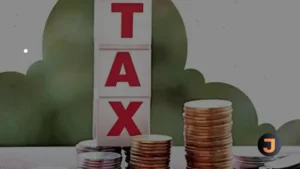The OPEC+ group of oil producers has extended its production cuts totaling 3.66 million barrels per day (bpd) until 2025, maintaining a controlled supply while taking advantage of the current price of the benchmark Brent crude at over $85 per barrel. OPEC forecasts that cumulative oil-related investment requirements from now until 2045 will amount to about $14 trillion, or around $610 billion a year. The cartel emphasizes that securing this vital funding is essential to maintaining security of supply and avoiding unwanted volatility.
Almost all major banks and lenders are of the view that oil and gas will be around “for quite some time” and back an orderly transition. Barclays has become the latest major international lender to backtrack on oil and gas. Its CEO, CS Venkatakrishnan, told Bloomberg on June 25 that banks can’t go “cold turkey” on the oil and gas industry without energy security risks. He said that calls for banks to abandon oil and gas are unrealistic.
Oil Giants and Energy Transition
Oil and gas companies, such as Shell and BP, have also been backtracking on energy transition commitments and are increasing their oil and gas investments. Global energy investment is set to exceed $3 trillion in 2024 for the first time, led by the growth of clean energy, with oil and gas investment growing back to its pre-crisis levels.
BP is a shadow of the mighty oil behemoth it once was and is living on borrowed time. Six months since it appointed a new CEO with the promise of “growing the value,” its market cap has slumped to a two-year low of around £75 billion. Bloomberg is warning that it is “time to change, or else.” According to BP’s 2024 Energy Outlook, oil demand will peak by the mid-2030s and then decline more than 20% by 2050 under current trends.
BP’s Outlook has revised higher all its forecasts for oil, natural gas, and coal consumption. What is worrying is that it anticipates that coal demand in its “current trajectory” scenario would be higher in 2050 than it was in 2000. OPEC forecasts that India will be the single largest and fastest driver of global energy demand growth, with its needs increasing by 19.3 million barrels of oil equivalent per day (boe/d) by 2045, almost 30% of non-OECD energy demand growth.
The world’s largest oil company, Saudi-owned giant Aramco, bought a 10% stake in Horse Powertrain, a company co-owned by Renault and Volvo-parent Geely, dedicated to building fuel-based engines, betting on the enduring power of petrol. Aramco said that combustion engines will be around for “a very, very long time.”
Petrochemicals and Natural Gas
The oil industry eyes petrochemicals profits amid uncertain fossil fuel demand. Oil and gas majors are preparing for a world in which transport fuels are no longer a big driver of growth, but petrochemicals are. The International Energy Agency (IEA) predicts that oil demand will grow to 105.45 million barrels per day in 2030, from 102.24 million bpd last year. Within that growth, 2.8 million bpd, accounting for more than 85% of the overall increase in demand, will come from petrochemicals.
Italian energy giant Eni plans to divest at least some of its oil and gas assets in the coming years, aiming to reduce Scope 1, 2, and 3 emissions by 35% by 2030, 80% by 2040, and achieve net-zero emissions by 2050. Press reports suggest that assets that could be candidates for this divestment plan may include some operations in Alaska, Indonesia, and Cyprus.
BP’s Energy Outlook also states that the global LNG demand outlook changes drastically depending on the pace of energy transition. Under “current trends,” LNG trade is set to nearly double by 2050, driven by demand from emerging nations.
Egypt’s gas output is below 5 billion cubic feet per day (cfd) for the first time since 2017. It’s not only top producer Zohr which is in decline; output at BP’s Raven, the country’s number two gas and top condensate producer, has halved over the past 18 months. This is leading to curtailment of electricity and blackouts while the energy crisis could spur a transition to renewables.
Karim Badawi has been appointed as Egypt’s new Minister of Petroleum and Mineral Resources, replacing Tareq El Molla. Egypt has announced a new plan to explore offshore and onshore areas looking for new oil and gas reserves, with companies agreeing to invest around $200 million. Yet, it is unlikely the Egyptian energy crisis will be solved soon, and criticism is growing on a daily basis.
Maintenance of Israel’s gas fields is worsening Egypt’s energy crisis, displaying the high level of dependency reached by Cairo on its neighbors. Egypt is rushing to buy LNG cargoes to avoid widespread blackouts this summer. Meanwhile, in a bid to improve energy security and strengthen diplomatic ties, Israel’s government has approved plans to more than double the country’s natural gas exports. It plans to gradually expand the offshore Leviathan basin’s production to 21 bcm annually from 12 bcm currently, with most of that going to Egypt.
Shell’s bet on a gas boom is taking shape with a string of deals that have replaced the LNG volume it lost after exiting Russia in 2022. This includes investment in ADNOC’s Ruwais LNG project in Abu Dhabi. Middle East oil and gas producers are going global in pursuit of natural gas. State-owned companies still see a future for gas to fill any gaps left by renewable sources. They see natural gas as a destination, not so much a transition fuel.
The 2024 Athens Energy Forum questioned what is the future of natural gas in Greece or for that matter in Europe? This must be made clear with clear policies; otherwise uncertainty risks thwarting future investment, potentially creating problems down the line.






